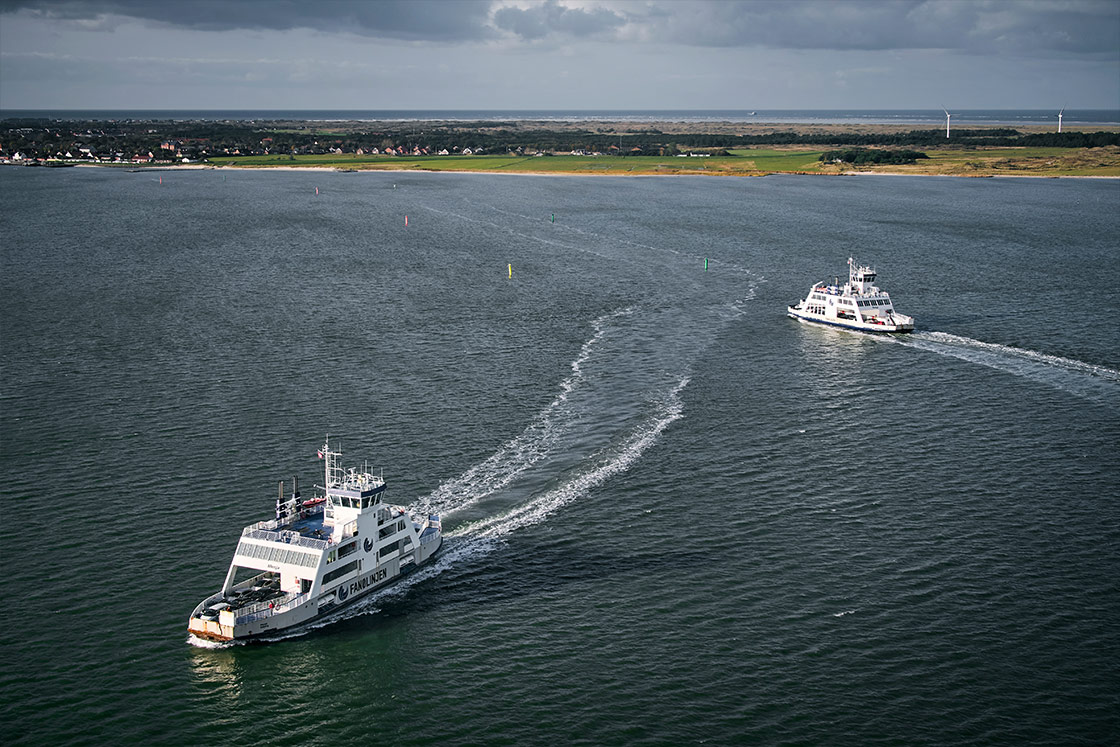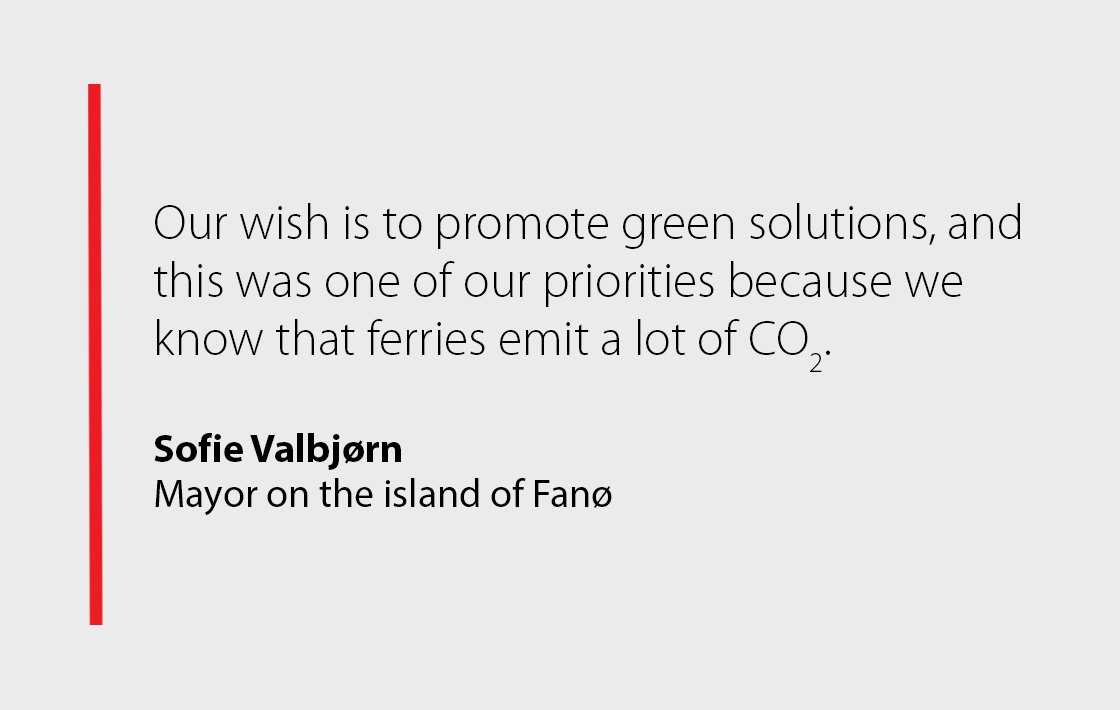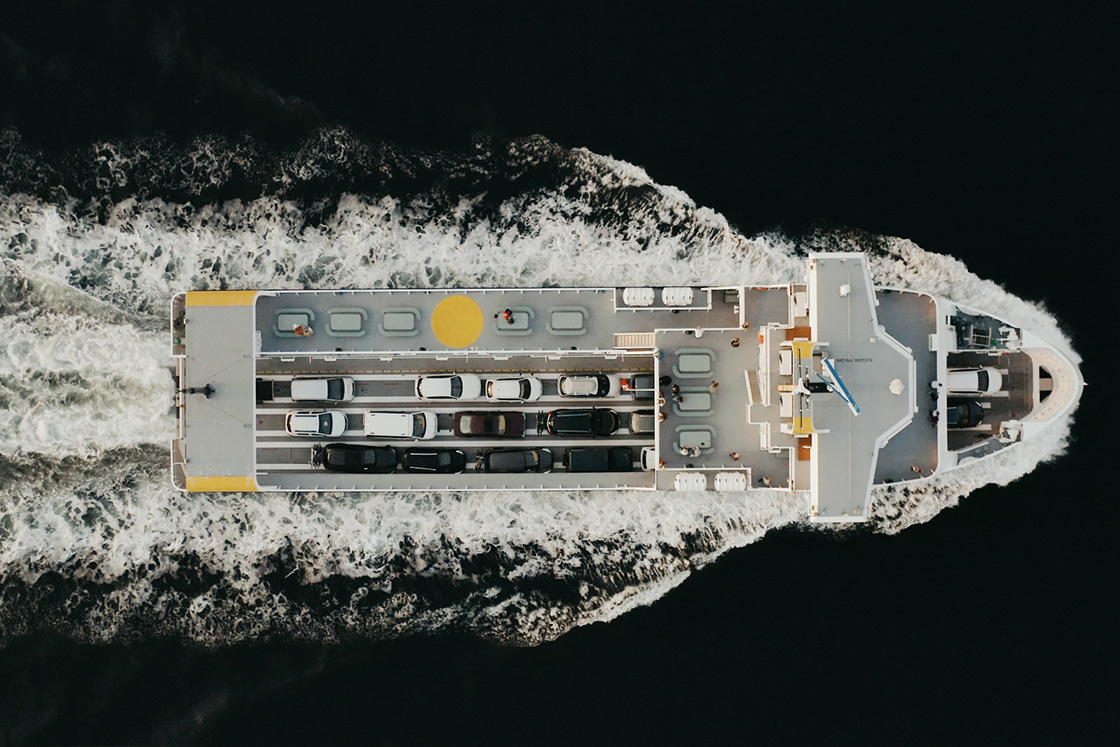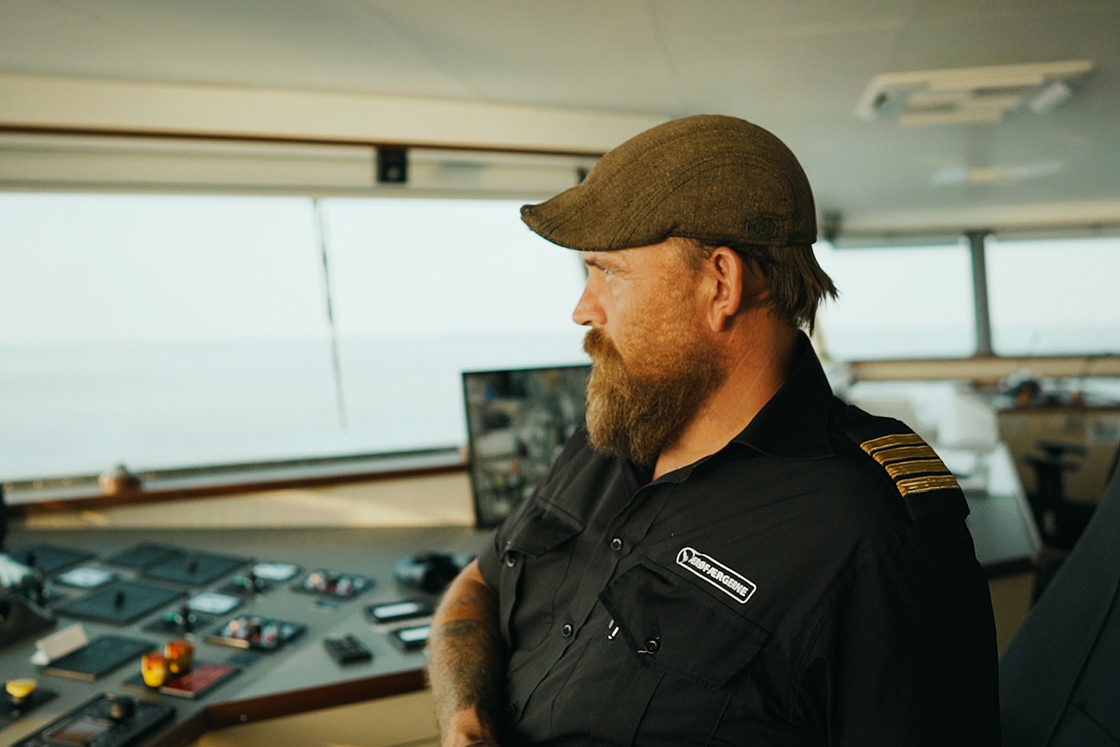Powered by Danfoss, the first fully commercial electric ferry in Denmark will be breaking the waves at the UNESCO World Heritage waters from September 2021. Every year, the new ferry will help bring 1,8 million passengers across the 4 km strait. The future holds big potential to operate shorter routes by electric ferries.

Denmark’s largest ferry company Molslinjen operating the route between the Danish coastal town of Esbjerg and the island Fanø in the southern part of the North Sea has now taken their first step towards electrification. In 2021, they will add the first electric ferry to their fleet, the first fully commercial electric ferry in the country. The new zero emission and low noise ferry will help bring passengers across the natural habitat of the Wadden Sea - World Heritage waters.
And Danfoss will help make this happen.
“This will be our first and most certainly not the last ferry powered by electricity,” says Ole Berg-Hansen, project lead from Molslinjen on building the new ferry. “We are operating the route on a contract with the municipality of Fanø and they were asking for a greener solution. Now we will be expanding the capacity for the route and at the same time take the first step to make our ferry service green.”

The ferry will be propelled by two 375kW propulsion electrical motors from Danfoss Editron; one in the front and one in the aft end. The two propulsion systems run independently and are controlled by Danfoss Drives converters. The electrical system is designed as a common DC system, buildup of Danfoss inverters for DC/DC battery control, inverters for motor control, DC-Guard for internal protection and grid converters for AC voltage systems, such as navigation, sub systems and lighting onboard. The ferry will be charged automatically when docked in the harbor in Esbjerg during the eight minutes of off-loading and loading of passengers.
With the new ferry, Molslinjen will supplement their two existing diesel-powered ferries on the Fanø-Esbjerg route. The perspective of bringing locals and tourists across the 4 km strait on an electric ferry is a big wish come true for Sofie Valbjørn, Mayor on the island of Fanø.
“I can’t wait to board the new ferry. Our wish is to promote green solutions, and this was one of our priorities because we know that ferries emit a lot of CO2. Now, we will be able to demonstrate to locals and tourists how we work towards sustainable solutions.”

Specialized shipyard takes on project
The transformation towards electrification is happening at Hvide Sande Shipyard, Steel & Service just 70 kilometers north of the ferry’s new hometown. The shipyard – specialized in building and repairing ships for the marine industry and offshore – has taken on the job. It’s the first ever full electric ferry for the shipyard and they have partnered with Danfoss and Vest-El A/S, specialized in supplying switchboards for ferries and fishing boats. Vest-El A/S will be supplying the entire electrical package including drives, cabinets and control and alarm systems.
“We are adding on competencies with well proven products from Danfoss. This is an exciting opportunity for us to embark on the electrification journey and this is where we see the market is moving,” says Steen Christensen, Partner in Vest-El.
The new electric ferry will be similar to the two existing, especially designed to sail the low waters of the Wadden Sea. Right now, the light weigh hull is being built in Poland and will be tugged to the shipyard in Hvide Sande where the new build will be completed, and all systems will be fitted.
“Electrification is the future, and the requests we get for new ferries and boats are electric. We have built hybrid ferries, however, a fully electric is a new type of project and very interesting because it will give us a solid foundation as to what are the best solutions, including the system from Danfoss,” says David Birkwald Thorstensen, Project Manager, Hvide Sande Shipyard.
The shipyard will begin equipping the ferry in January 2021 and it will be put into operation at the end of September 2021.

Powering the future
When the world’s most powerful E-ferry Ellen took its maiden voyage last year between the two Danish islands Ærø and Als, it paved the way for potentially 900 ferries in Europe to be electrified. In Denmark, 42 shorter routes are operated by 52 ferries. A study shows that 35 out of the 52 ferries are profitable to transform from fuel driven to electrical.
Danfoss Key Account Managers in the marine segment, Jens-Christian Strate and Søren Ingwersen, are proud to present the closing of the order.
“This is super exciting and opens up possibilities for new project sales for us. The ferry operator is a big company and the shipyard is a key player in specially designed ships. Right now, the potential and willingness to invest in future proof solutions in the market is big,” Jens-Christian Strate says.
Facts
| The new ferry will be 50 meters long with a width of 14 meters. The ferry can set a speed of 11 knots and will be able to carry 300 passengers and 32 cars. Due to the low waters of the Wadden Sea and the total weight of the batteries and freight a special ship design has been chosen by Molslinjen. |

The E-ferry Ellen
The E-ferry Ellen is a prototype and has been sailing as an ordinary car- and passenger ferry, for 15 months between Ærø and Als.
A report underlines an impressive payback time down to 4 years.
